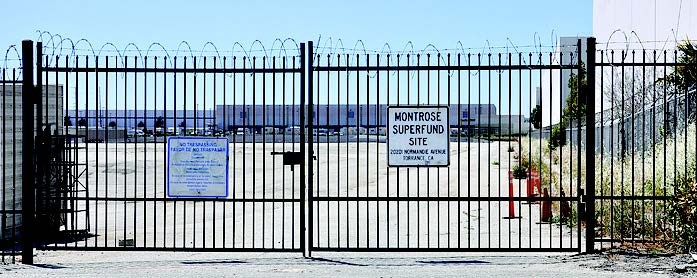Poison Paradise: Montrose Chemical’s Legacy in Southern California
The Montrose Chemical Corporation manufactured half the world’s dichlorodiphenyltrichloroethane, also known as DDT, from 1947-1982 in the Harbor Gateway neighborhood of Los Angeles. The production of this insecticide, which the EPA banned the domestic use of in 1972, contaminated the soil underneath and around the plant with extremely high quantities of DDT. Today, the location is a federally-designated Superfund site, an EPA designation for the nation’s most contaminated and hazardous sites.
During operation, the company routinely disposed of their product by dumping it into the sewer system, into the nearby Dominguez Channel, and pouring it directly into the ocean off of barges. The Palos Verdes shelf– located at the bottom of the Pacific between the industrial Port of LA and pristine Catalina Island– is also a Superfund site. The high presence of DDT off the coast has been directly linked to the decline of the bald eagle on the Channel Islands, the near-extinction of the California condor in Southern California,
and increased rates of cancer in sea lions and humans alike. The extent of the contamination remains under investigation. As DDT bioaccumulates, the reverberations are still being felt across the food chain– including in human bodies, where DDT presence can be passed through breast milk.
Montrose Chemical is exceptional, but it is not unique. In the Anthropocene, where human activity is the dominant force shaping our environment, we increasingly must grapple with chemical contamination as part of our landscapes and as part of our heritage. Through archival research of the site and the chemical industry, as well as exploring case studies of other natural disasters and sites of mass loss, this thesis will examine how largely invisible losses are processed, remembered, and memorialized as a part of our histories.

